
The California yellowtail ranks as one of the most sought-after and prized game fish on the West Coast. This Pacific member of the amberjack family can reach weights in excess of 35 pounds or more, displays amazing power, possesses an affinity for snag-infested structure and makes for excellent table fare. Yet many anglers, including some who reside on the West Coast, mistakenly think of yellowtail exclusively in terms of a summer fishery.
A significant number of yellowtails remains off the coast of Southern California and northern Baja California through winter and early spring. The tricks used to catch them involve knowing areas where the roaming schools will likely visit and using special techniques to tempt these winter brutes to bite. One of the most reliable methods involves rigging squid and fishing them throughout the water column.
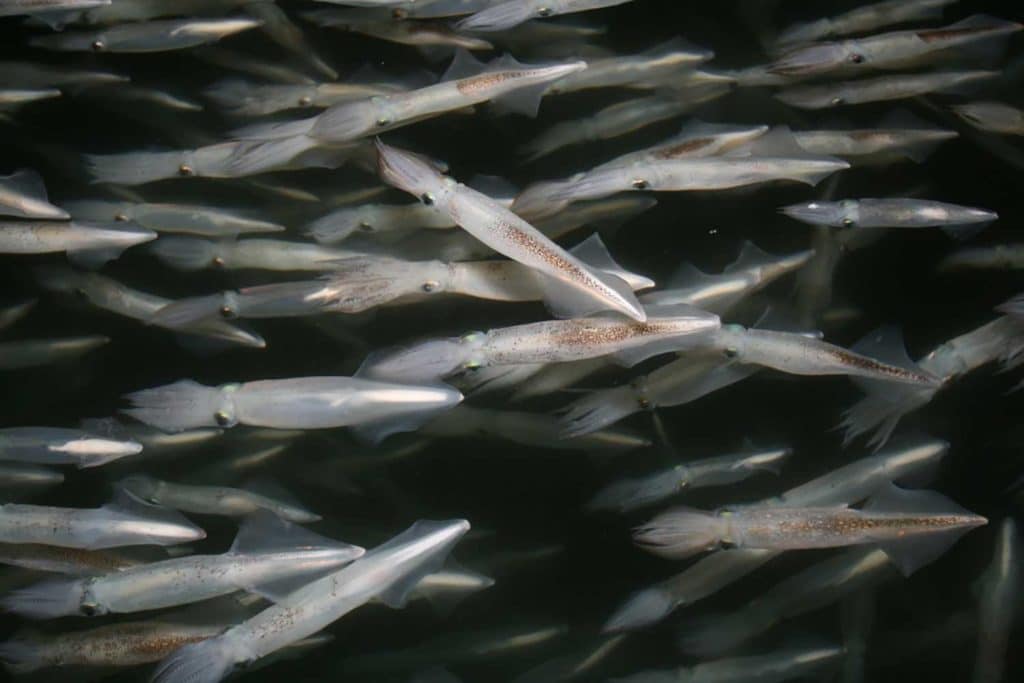
Squid Logic
The late fall and winter arrival of dense schools of opalescent squid, which spawn off the Southern California coast and around offshore islands such as Santa Catalina and San Clemente, sounds the dinner bell for yellowtail. Once pods of yellows converge on squid, they become laser-focused on these cephalopods, and generally ignore other baits and most lures.
To find more willing yellows, you must locate the squid spawning grounds, which are usually in depths of about 120 feet. Some of the most common areas include the coastal zones of Ventura County, Santa Monica Bay, Huntington Beach, Camp Pendleton, and Oceanside. Among the islands, look along the southern side of Santa Cruz Island, the eastern side of Santa Barbara Island, the Palisades area on the backside of Santa Catalina Island and Pyramid Cove on San Clemente Island.
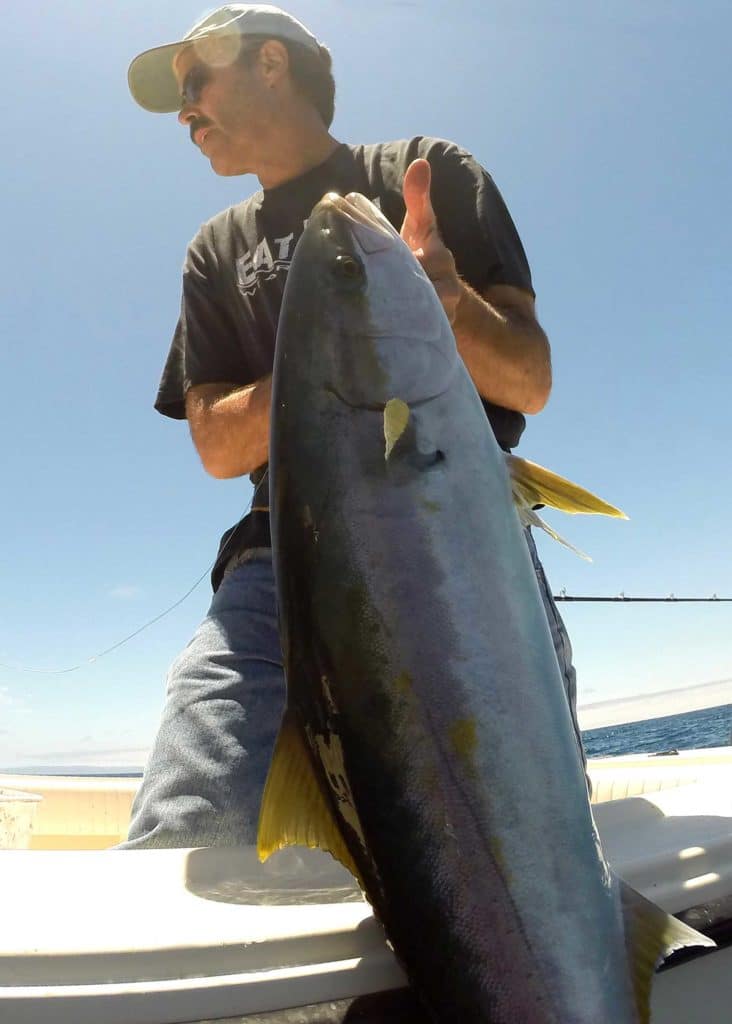
Look for Signs
Marine life telltales such as an abundance of sea lions, pods of Rizzo’s dolphins and finning blue sharks can help lead you to squid below. Light-boats and purse seiners in the area also serve as a sure indicator that commercial fishermen have found the squid spawning grounds. All converge to cash in on the abundance.
You can pinpoint schools of squid, the egg-pod nests they deposit on the sandy ocean floor, and the marauding yellowtail with a well-tuned fish finder. Squid display as light blue marks on the screen, while the nests of egg pods show as a light-blue fuzz along the sea bed. Schools of yellowtail look like dark red, sharply angled marks on the fish-finder screen, and those red streaks often move rapidly up and down in the water column as the yellowtail hunt and chase squid.
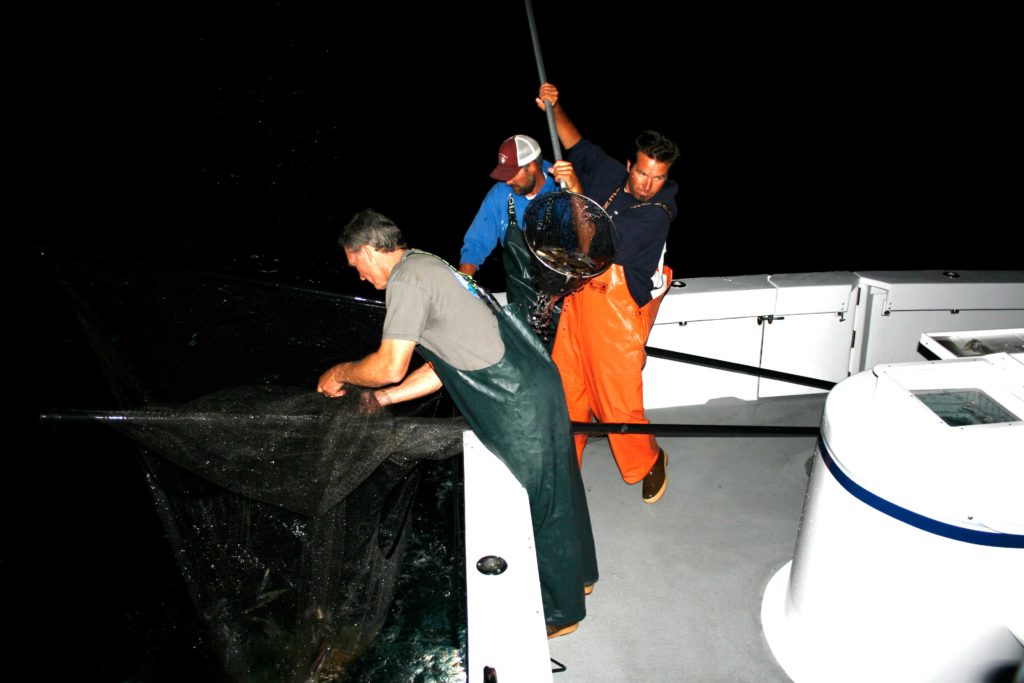
Grounds for Success
While squid form dense packs to spawn at night, they generally hang around the spawning grounds throughout the day and night during the buildup to spawning, which may last a week, a month or longer. Often, schools of squid arrive in phases, rather than all at once, which helps extend the yellowtail bite for months. You are likely to find yellowtail in the area at any time of the day or night.
You can obtain live squid for bait in two ways. You can catch your own, but that’s a process that requires being on the squid grounds at night and deploying bright lights in the hopes of jigging or netting enough to fill the livewell for fishing. That can be an exhausting ordeal.
The easier method involves buying squid from commercial live-bait fishermen, who sometimes go out ahead of time to catch the squid and then sell them from their boats and at bait barges along the coast. Either method can be a hit-or-miss affair. If you fail to find live squid, fresh dead or frozen squid can work, but not as effectively.
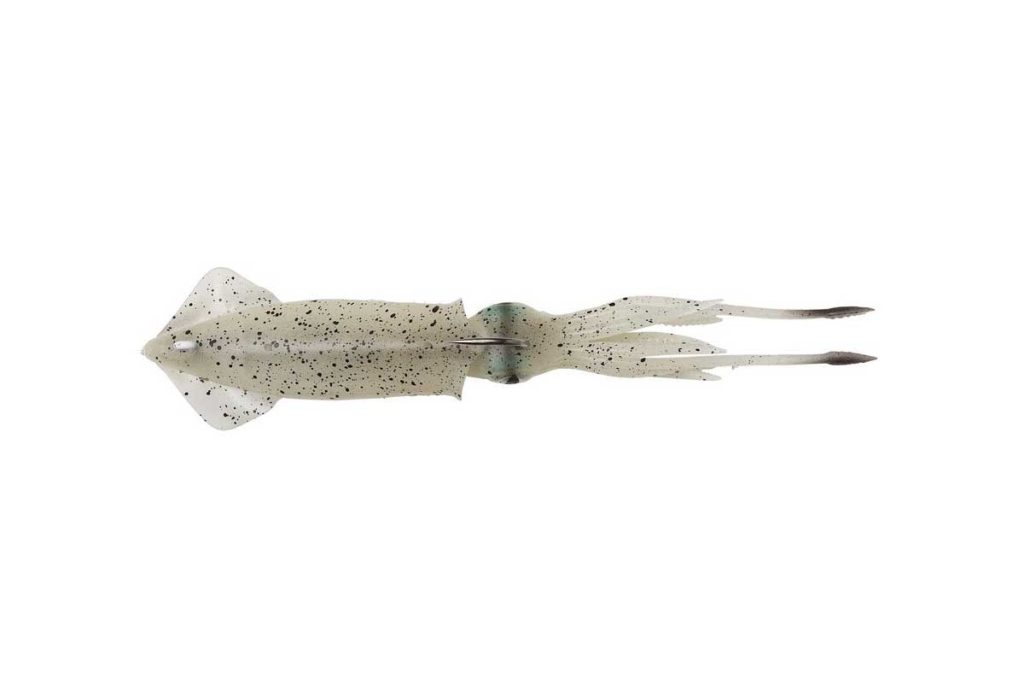
Great Imitations
Lures that mimic opalescent squid can also prove effective. Among the most popular is the Savage Gear 3D Swim Squid in the 5-inch length. It comes pre-rigged with a hook and 1-ounce internal weight. The best colors include Glow and Green Eye. Another squid lure is Chasebaits’ The Ultimate Squid in the 7.8-inch version in the Market Squid color. This lure needs to be rigged with a lead head.
Yellowtail range in weight from 12 to 40 pounds, and they have plenty of power. Use stout tackle, such as a 7-foot rod rated for 30- to 50-pound-test line matched with a lever-drag reel such as an Okuma Makaira 10II or a Shimano Talica 10II two-speed. Spool up with 65-pound-test braid and use a 10-foot topshot of 40- to 50-pound-test fluorocarbon.
Yellowtail tend to invade the squid grounds to feed when a mild to strong current is present. Anchor up in the current over the spawning beds and fish live squid just above the bottom and elsewhere in the water column to produce the best results. Use a dropper-loop rig to fish a bait a few feet above the bottom.
Read Next: California Yellowtail Fishing Tips
To make the rig, use a spider hitch to create a 10-inch-long loop in your fluoro topshot, about 3 to 4 feet above the end of the line. Tie a 6- to 12-ounce torpedo sinker to the tag end of the topshot. Tie a 5/0 to 7/0 Owner Aki Twist hook to the end of the loop, and pin the squid through its pointy end, opposite the head.
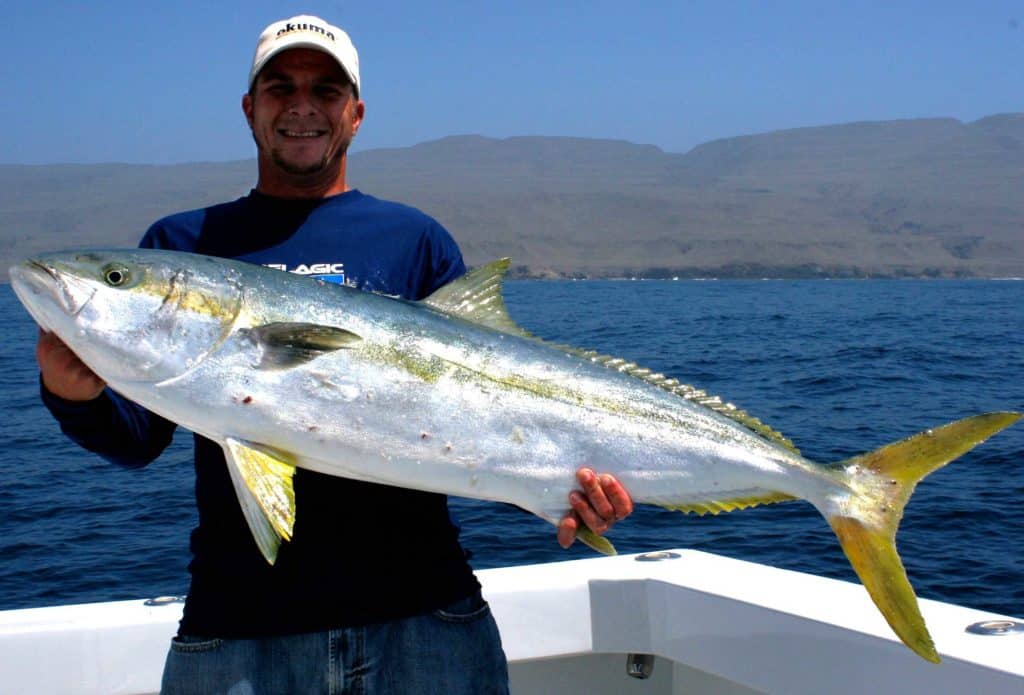
Cover the Column
Once you’re baited up, freeline the sinker to the bottom, then reel up 5 or 6 feet. Fishing just above the sea floor helps keep the bait away from undesirable bottom feeders such as bat rays and guitarfish. Also, yellowtail tend to look upward for prey, and this puts the bait in the target zone for fish cruising the bottom.
Place the rods in forward rod holders and keep the reels in gear, so that when a yellow eats the bait, it’s hooked automatically. In the meantime, freeline or slightly weight a live squid (with a ½- to 1-ounce sinker) in the current behind the boat. Fishing an artificial squid can also be effective. This helps cover the water column in case yellowtail chase live squid closer to the surface.
Find the squid grounds and you find the yellowtail. That’s a perfect wintertime combo.








